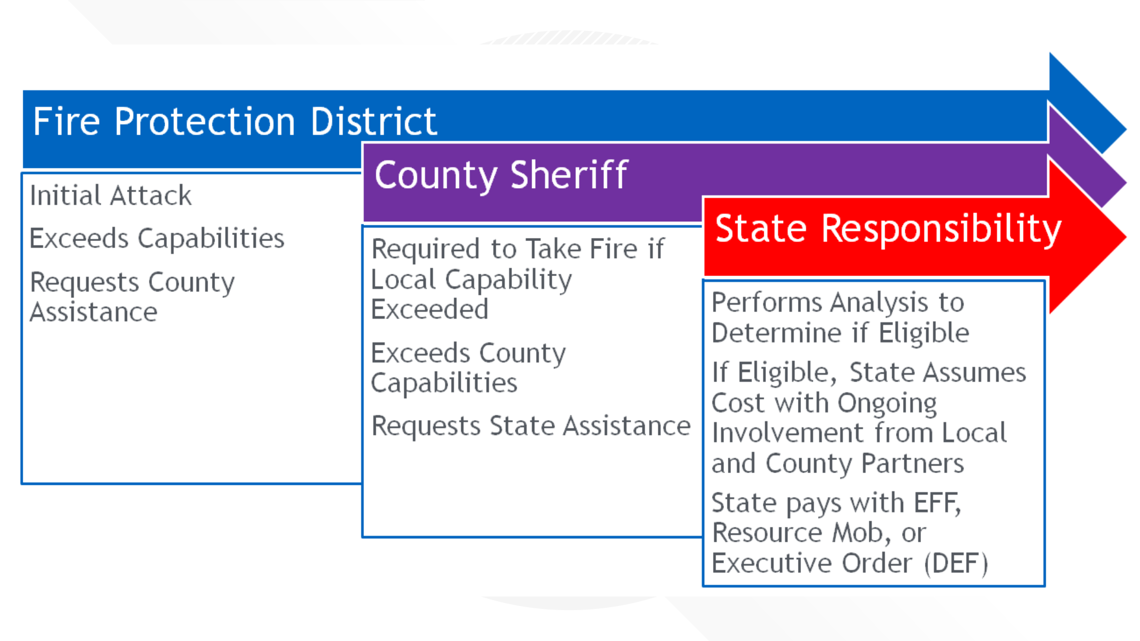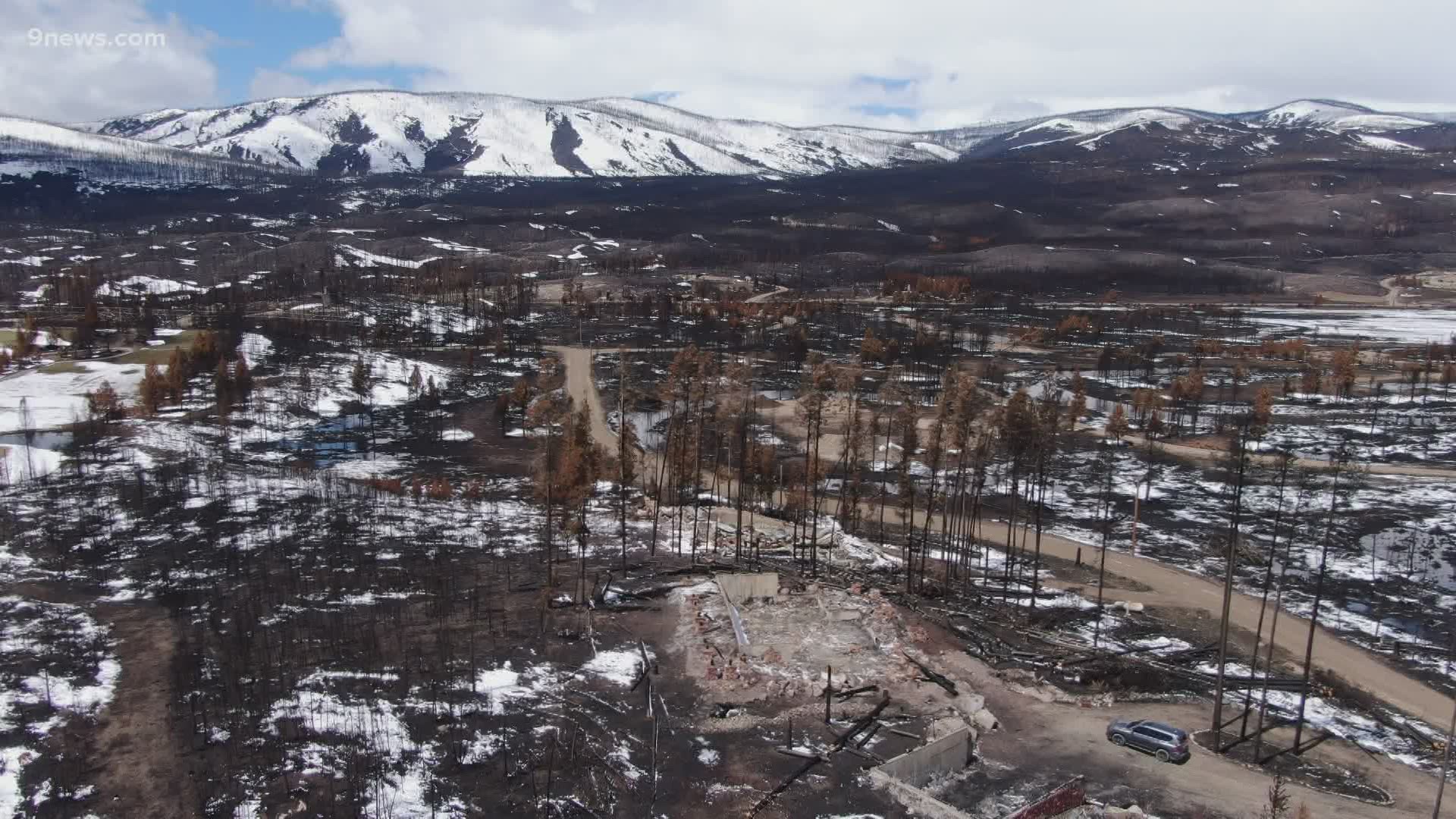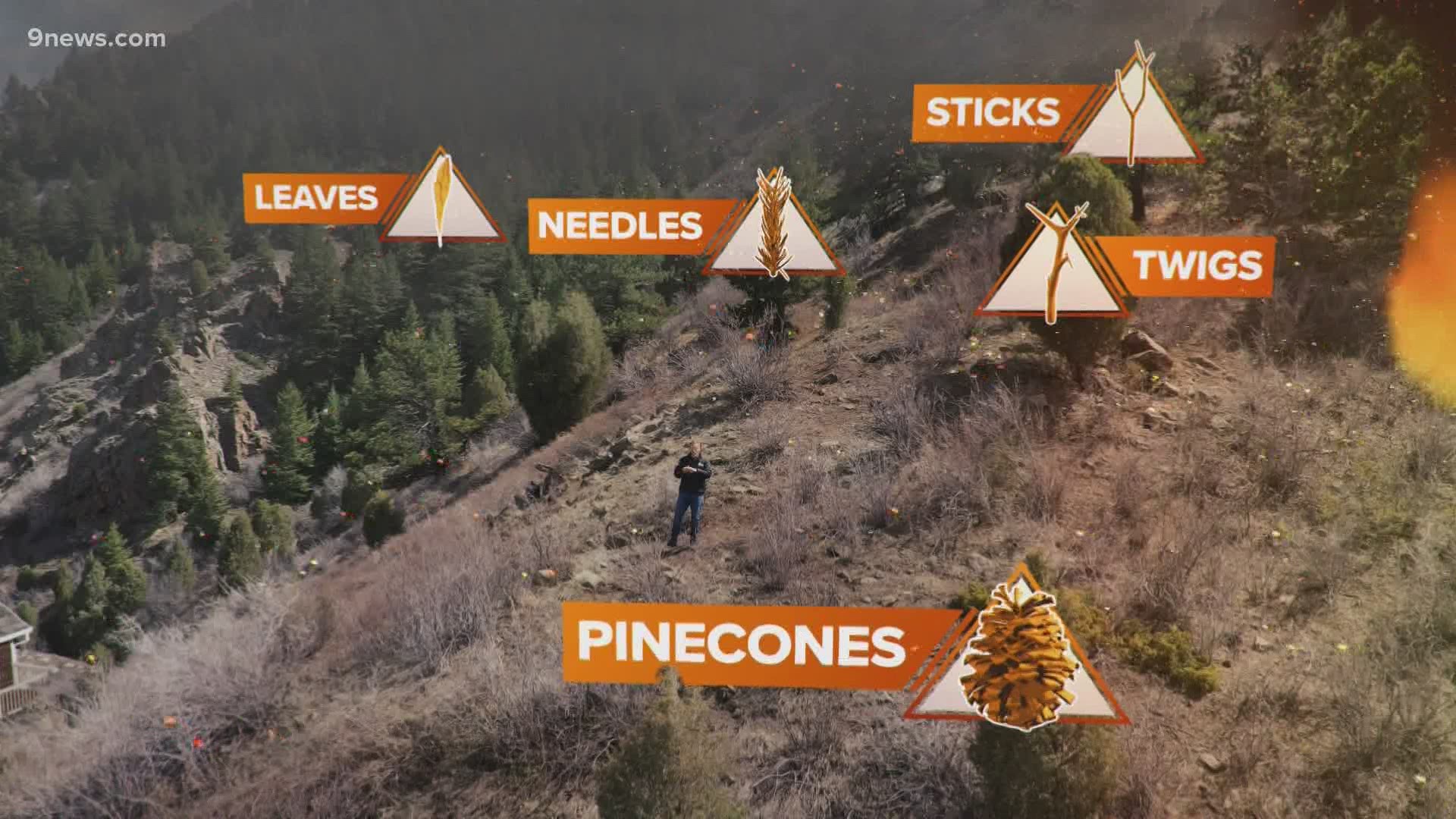COLORADO, USA — The length of the average wildfire season in Colorado has increased by 78 days since the 1970s.
While the state's main fire season is expected to begin in mid-May, officials have warned that wildfires that were once largely confined to summers and early fall will happen more and more.
“In 2021, we have already experienced fires," Gov. Jared Polis (D-Colorado) said. "One of the things that is a change of paradigm is Colorado used to talk about a fire season. It’s now a year-round phenomena."
And it's a year-round phenomena that affects people in areas once deemed safe. The Colorado State Forest Service said almost half of Coloradans live in areas at risk of wildfires, and it was a number that was expected to grow.
Here's a guide to what you need to know about wildfires in Colorado, the resources available and what's being done by the state to prevent them.
>>> After a record-setting year for wildfires in Colorado, the communities hit hardest are just starting to rebuild. As fire survivors work through the recovery process and the landscapes we love are restored, 9NEWS is looking at how Colorado can make communities safer. We're examining the impacts of wildfire smoke on everyone's health, and how to help survivors cope with the hidden scars of last year. Colorado Wildfires: From Ashes to Action will air all month long on 9NEWS.
Which areas are most at risk of fires?
The wildland-urban interface is where human development intermingles with wildland vegetation. Over the past few decades, the number of people living in these forested zones has increased.
This means that firefighters put in extra effort to suppress and control fires that burn in these areas. Wildfires are necessary to maintain healthy forests, and it means that firefighting efforts to protect homes can have a negative impact on ecosystems.
> Click the map below for the Colorado Forest Service's tool to see wildfire danger within a half mile of a given address.
Because of the presence of people in the wildland-urban interface, forest managers are working to ensure that buildings are adapted so that when fires start, firefighters can protect structures while allowing the blaze to do its part to make the forest healthier.
You can find out your wildfire risk through the Colorado Office of Emergency Management (OME) portal.
How do wildfires start and spread?
A wildfire begins with a spark.
That spark could be caused by something natural, like lightning. Or, increasingly commonly, it could be human-caused, be it from power lines, campfires, cigarettes or vehicles.
After the ignitor, fires need fuel and winds. Wildfires can't spread quickly in lush environments, and they thrive during droughts, when vegetation turns into kindling.
RELATED: 'We do not have enough resources': State officials dealing with explosive growth of wildfires
Windy conditions can cause fires to balloon in size. The East Troublesome Fire in 2020 grew by nearly 100,000 acres overnight.
Wildfires also tend to burn better going uphill because heat rises and spreads to other fuels on a mountainside. This also means that thick, overgrown forests can cause a blaze to spread even more quickly, which shows the need for forest management.
What's the fire outlook for 2021?
Colorado fire officials warn that 2021 has the potential to be another devastating wildfire year, with above-average temperatures and below-average precipitation expected through June.
At a news conference discussing the fire forecast, officials said this will lead to continued drought conditions and above-average to significant fire potential in portions of southeastern Colorado.
Core fire season is expected to begin in the second half of May, and intensifying drought conditions will expand fire potential northward through June, impacting the majority of the Western Slope by July.
Who is responsible for responding to fires?
The Colorado Office of Emergency Management (OEM) said wildfire protection responsibilities on non-federal lands in Colorado follow a hierarchy. First, it's up to the chief of the local fire protection district to determine the appropriate response.
If the fire grows to the point where it's beyond the capabilities of the local fire department, the county sheriff will assume responsibility. If the fire continues to grow, the sheriff can ask for help from the state.


On federal land, five agencies could have jurisdiction: the National Park Service, Bureau of Land Management, U.S. Forest Service, U.S. Fish and Wildlife Service and the U.S. Department of Interior's Bureau of Indian Affairs.
What resources does the state have to fight wildfires?
Local, state and federal authorities have different resources for fighting fires.
At the state level, multiple types of aircraft are available. This includes multi-mission aircraft, which are used to monitor small fires, as well as map larger ones.
The state has multiple single-engine air tankers available, which can drop up to 800 gallons of retardant on blazes. The state also has teams of firefighters called modules that available to help hand crews that are dispatched to forest fires.
Local jurisdictions can also request engines, large air tankers that can drop up to 3,000 gallons of retardant, and helicopters to support firefighting efforts.
Why are fires measured in acres?
Next with Kyle Clark asked this question in 2018. Basically, it comes down to the fact that acres cover area, rather than a straight line.
"If we were gonna try to convert an acre into something like miles, miles is really a linear unit, so we have to go into square miles," said Kellie Zolnikov, a mathematics professor at Metropolitan State University of Denver.
A square mile is hard to conceptualize, but basically, it contains 640 acres. One city block is about 2.5 acres, if that's easier to conceptualize.
How did the 2020 fire season compare to past years?
Three of the largest wildfires in Colorado history burned in 2020, and the season lasted far longer than usual, extending into October.
Fire officials say cleaning up after 2020 will take years and that work is still happening to clean up the fire lines left behind by hand crews, as well as to assess the full scope of the damage.
While these fires were large, they were not as destructive to property as those that burned in 2012 and 2013.
The June 2013 Black Forest Fire lead to more than $420 million in property damage and more than 400 structures were damaged.
How do you mitigate fire risk at your home?
The Colorado State University Extension says many Coloradans living in the foothills in ponderosa and lodgepole forests need to be aware of how fire-prone these ecosystems are.
Two factors determine a home’s ability to survive fires: the quality of the defensible space around a home and its structural ignitability, CSU said. This is what’s known as the “Home Ignition Zone (HIZ),” and it’s essentially the house and what’s around it.
To prepare for potential wildfires, CSU says to clear or reduce fuels to give the home a fighting chance against an approaching wildfire.
As for your home itself, CSU says to choose a fire-resistant roofing material and to avoid flammable materials like wood or shank shingles.
For more information on appropriate roofing materials and other fire-resistant building designs and materials, refer to the CSFS publication:
Please see these additional references for reducing structural ignitability:
Here are tips for preventing a wildfire from destroying your home by the Rocky Mountain Insurance Information Association (RMIIA):
Create a 30-foot defensible space around your home by removing as much flammable material as you can. Replace flammable vegetation with fire resistive plants.
Reduce the number of trees in heavily wooded areas by spacing native trees and shrubs at least 10 feet apart. On trees taller than 18 feet, prune lower branches within 6 feet of the ground.
Remove branches overhanging the roof or coming within 10 feet of the chimney. Clean all dead leaves and needles from the roof, gutters and yard.
Install a roof that meets a fire classification of "Class B" or better. Cover the chimney outlet and stovepipe with nonflammable screening no larger than half-inch mesh.
Install dual- or triple-paned windows, and limit the size and number of windows that face large areas of vegetation.
Put woodpiles and liquid propane gas tanks at least 30 feet from all structures and clear away flammable vegetation within 10 feet of those woodpiles and propane tanks.
Check out additional resouorces on the National Fire Protection Association's (NFPA) Firewise Communities website for homeowners.
- Check out the Federal Alliance for Safe Homes interactive WildFIRE Wizard tool designed to help those in wildfire-prone areas understand how landscaping, terrain and structural features increase or decrease a home's vulnerability during a wildfire. Input details about features including windows, doors, roof, exterior walls and landscaping, and create a customized report that includes specific recommendations about how to reduce your home's potential to ignite during a wildfire.
How does insurance work when it comes to wildfires?
The RMIIA had the following tips for what to do if you are evacuated because of a wildfire:
- Contact insurance agents or companies immediately. After disasters, many set up 24/7 hotlines. You can also begin to request checks for temporary living expenses.
- Keep receipts.
- Take photos of damaged areas.
- Keep a detailed inventory of all damaged or destroyed personal property.
- Make whatever temporary repairs you can, and save those receipts, too.
- Secure an estimate for repairs from a contractor and give that to an adjuster.
- Know that more serious claims will get priority.
List of resources for fire victims
- Sign up for the latest Colorado wildfire alerts here.
- Ready.gov - Wildfires
- Ready, Set, Go!
- Surviving Wildfire
- Colorado Wildfire Risk Assessment Portal
- Colorado State Forest Service
- National Interagency Fire Center
- U.S. Fire Administration
- US Forest Service
- National Fire Protection Association
- Rocky Mountain Insurance Information Association
- Firewise
- Fire Adapted Communities
- Red Cross - Wildfire Preparedness
- InciWeb
- Colorado State Forest Service fire mitigation tips
- Fire resources from Colorado State University
Here's a map of Colorado fire restrictions by county:
SUGGESTED VIDEOS: Wildfires in Colorado



